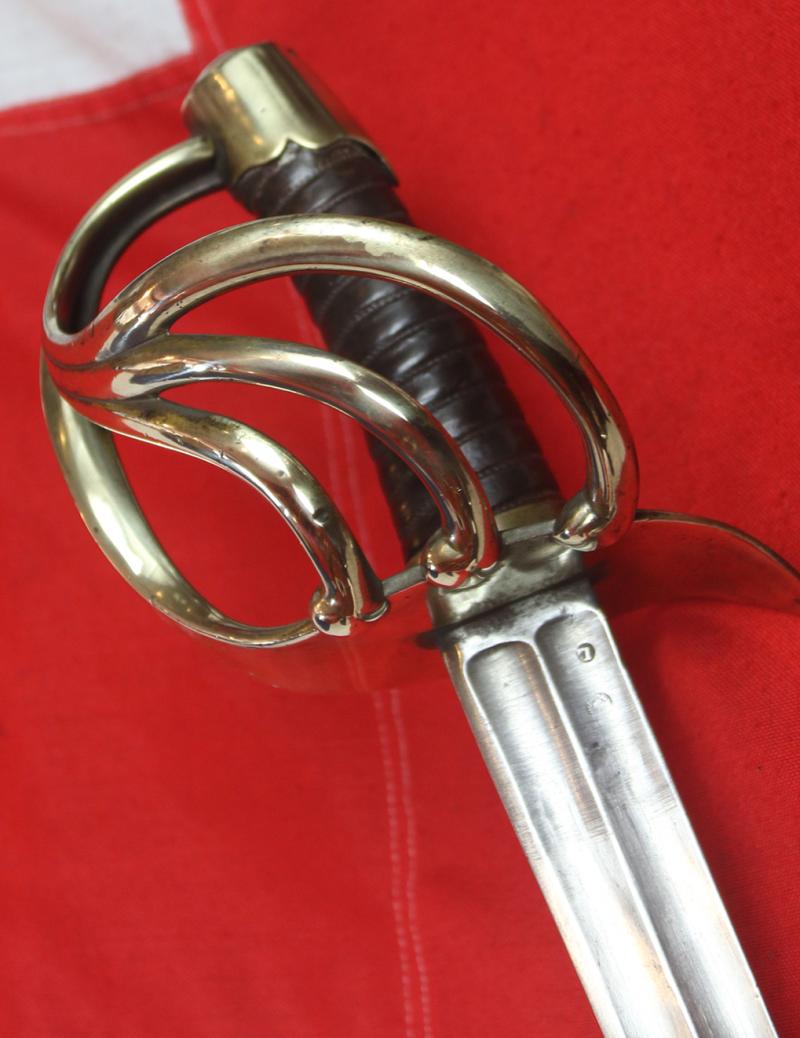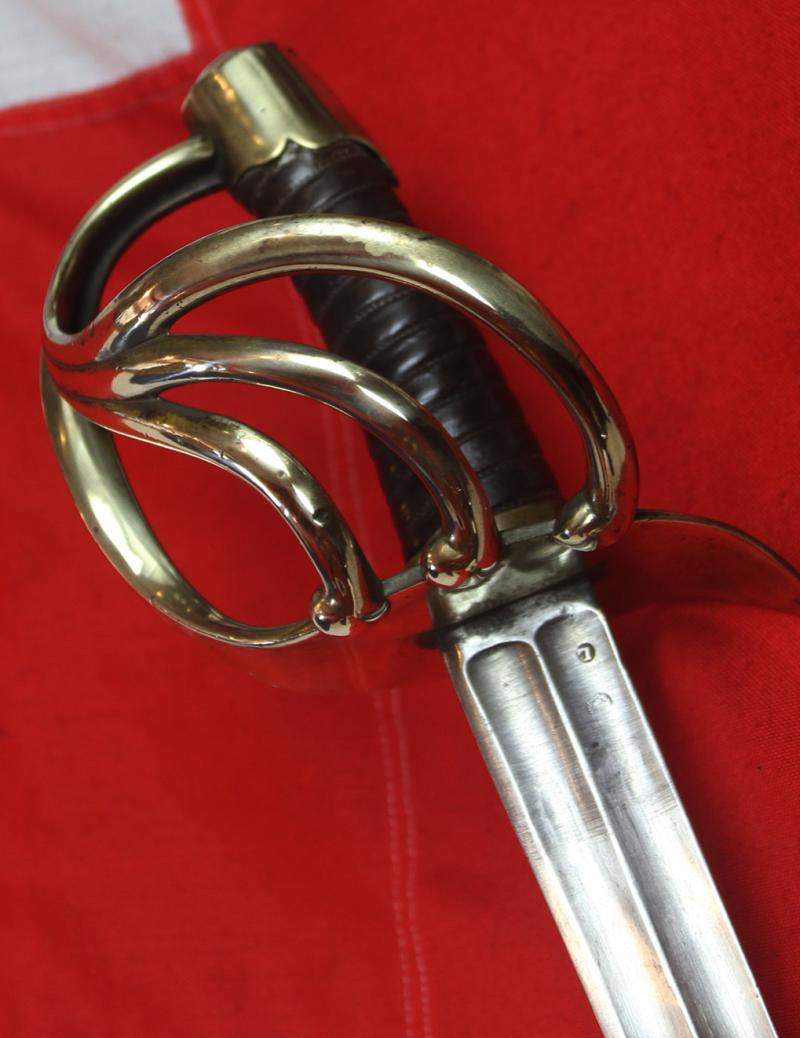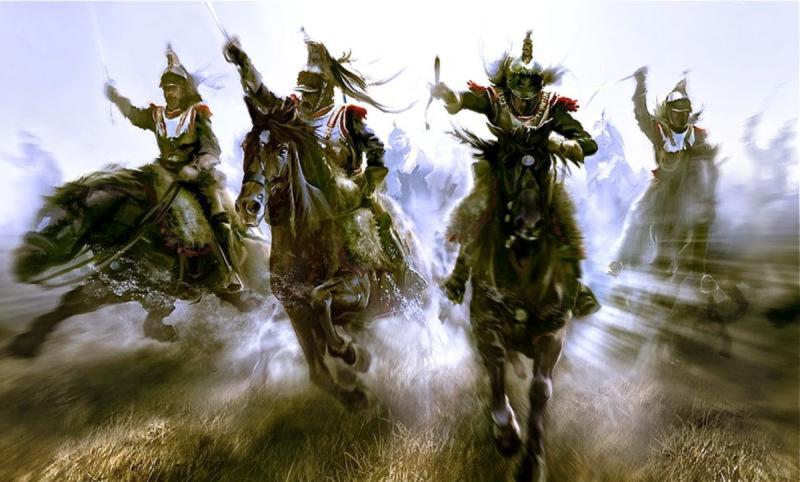A Very Fine & Incredibly Impressive Napoleonic 1st Empire French Cuirassier's Sword. The Largest Cavalry Sword Ever Made, for The Tallest Soldiers of France, & Used At Waterloo
Superb and beautiful hilt, with very fine original leather bound grip, and a very fine double fullered blade with stunning bright patina. Steel combat scabbard without denting. French Napoleonic 'An 13' year 13 swords were manufactured from 1805 and discontinued in late 1815, whereupon it was superceded in general by the later hilt style of the 1816 model, although some of the surviving models, such as this beauty, continued in service.
Renown throughout the world of historic sword collectors as probably the biggest and most impressive cavalry sword ever designed. This would have seen service in the Elite Cuirassiers of Napoleon's great heavy cavalry regiments.
Napoleon hoped to compel Tsar Alexander I of Russia to cease trading with British merchants through proxies in an effort to pressure the United Kingdom to sue for peace. The official political aim of the campaign was to liberate Poland from the threat of Russia. Napoleon named the campaign the Second Polish War to curry favour with the Poles and provide a political pretence for his actions. The Grande Armee was a very large force, numbering nearly half a million men from several different nations. Through a series of long marches Napoleon pushed the army rapidly through Western Russia in an attempt to bring the Russian army to battle, winning a number of minor engagements and a major battle at Smolensk in August. Napoleon hoped the battle would mean an end of the march into Russia, but the Russian army slipped away from the engagement and continued to retreat into Russia, while leaving Smolensk to burn. Plans Napoleon had made to quarter at Smolensk were abandoned, and he pressed his army on after the Russians. The battles continued, but once the winter set in Napoleon's army was facing insurmountable odds that left it effectively shattered beyond repair. Napoleon fled, it is said, dressed as a woman, and the army left to it's sad and miserable fate. Only around 27,000 were able to return after a mere six months of the Russian campaign. The campaign was a turning point in the Napoleonic Wars. The reputation of Napoleon was severely shaken, and French hegemony in Europe was dramatically weakened. The Grande Armee, made up of French and allied invasion forces, was reduced to a fraction of its initial strength. These events triggered a major shift in European politics. France's ally Prussia, soon followed by Austria, broke their alliance with France and switched camps. This triggered the War of the Sixth Coalition. The Cuirassiers Heavy Cavalry Regiments used the largest men in France, recruited to serve in the greatest and noblest cavalry France has ever had. They fought with distinction at their last great conflict at the Battle of Waterloo in 1815, and most of the Cuirassiers swords in England very likely came from that field of conflict, after the battle, as trophies of war. However, this sword was one of the few that were allowed to remain in the elite cuirassier corps after Waterloo, serving King Louis XVIIIth both before Napoleon's 100 days, and after his crushing defeat by Wellington at Waterloo. In fact one can see it has been service together with its scabbard, as they are bearing the same serial numbers matching. Inspected on the blade by Lobstein and Bick, also back strap engraved Manufacture Imperial Klingenthal, January 1814. Hilt stamped with the serial number 614, as on the scabbard
Every warrior that has ever entered service for his country sought trophies. The Mycenae from a fallen Trojan, the Roman from a fallen Gaul, the GI from a fallen Japanese, the tradition stretches back thousands of years, and will continue as long as man serves his country in battle. In the 1st century AD the Roman Poet Decimus Iunius Iuvenalis Juvenal
wrote; "Man thirsts more for glory than virtue. The armour of an enemy, his broken helmet, the flag ripped from a conquered trireme, are treasures valued beyond all human riches. It is to obtain these tokens of glory that Generals, be they Roman, Greek or barbarian, brave a thousand perils
and endure a thousand exertions". A truly magnificent Napoleonic sword in superb condition for it's age.
The largest sword of it's kind that was ever made or used by the world's greatest cavalry regiments. The cuirassiers were the greatest of all France's cavalry, allowing only the strongest men of over 6 feet in height into it's ranks. The French Cuirassiers were at their very peak in 1815, and never again regained the wonder and glory that they truly deserved at that time. To face a regiment of, say, 600 charging steeds bearing down upon you mounted with armoured giants, brandishing the mightiest of swords that could pierce the strongest breast armour, much have been, quite simply, terrifying. The brass basket guard on this sword is first class, the grip is totally original leather and a great colour
only shows expected combat wear, the blade is double fullered and absolutely as crisp as one could hope for. Made in the Napoleonic Wars period.
Just a basic few of the battles this would have been used at such as
1814: La Rothiere, Rosnay, Champaubert, Vauchamps, Athies, La Fere-Champenoise and Paris
1815: Quatre-Bras and Waterloo. Apparently every remaining French elite cuirassier regiment fought at Waterloo for Napoleon, and there were no cuirassier reserve, and there were no cuirassier militia
The blade has wonderful steel bright colour, and the hilt has fabulous patina. Overall 45.5 inches long in its scabbard, the spear pointed blade is 37.6 inches long. Old original aged patina and regular usual surface staining to the scabbard steel.
Code: 25231
2395.00 GBP










